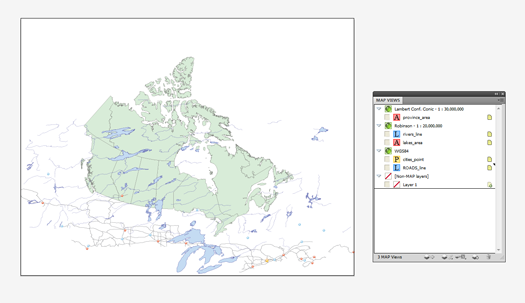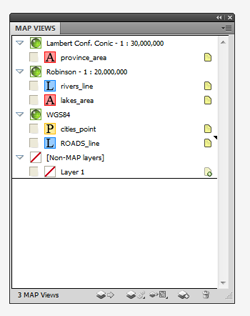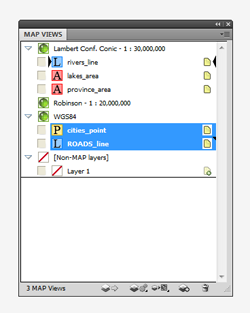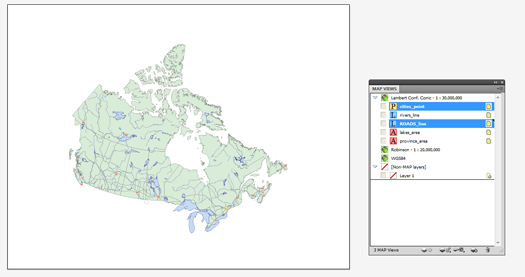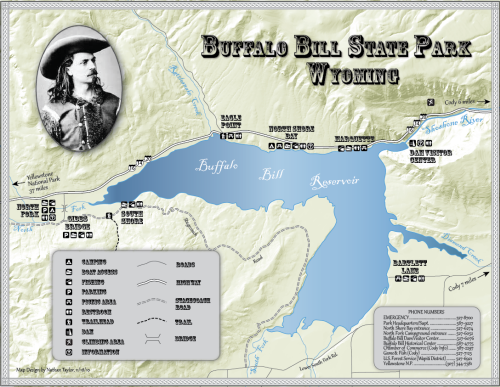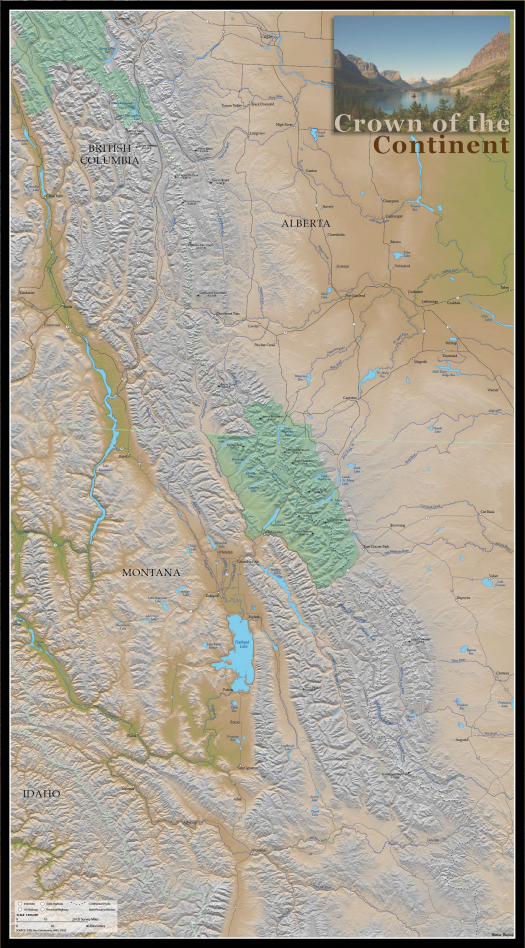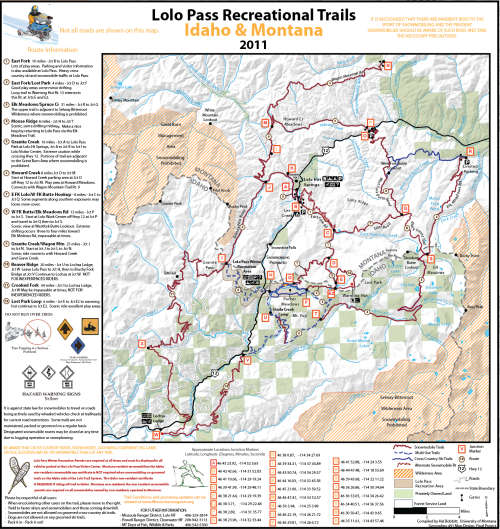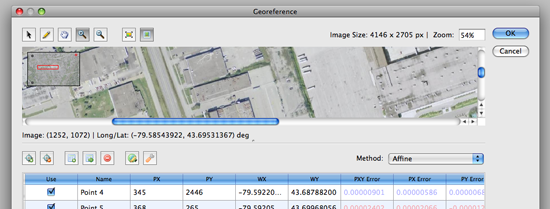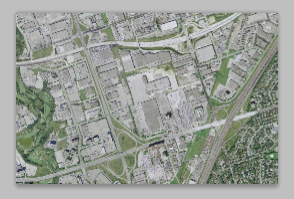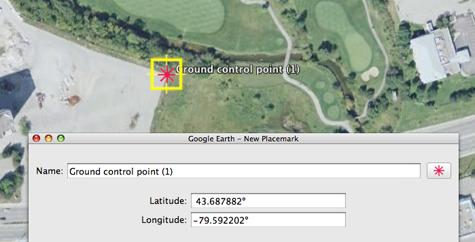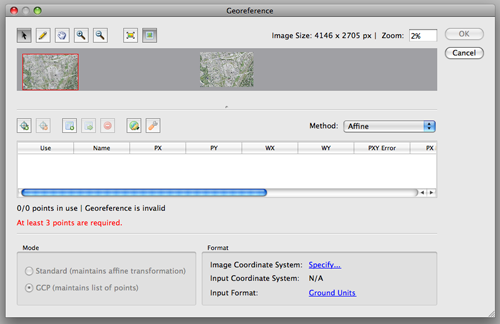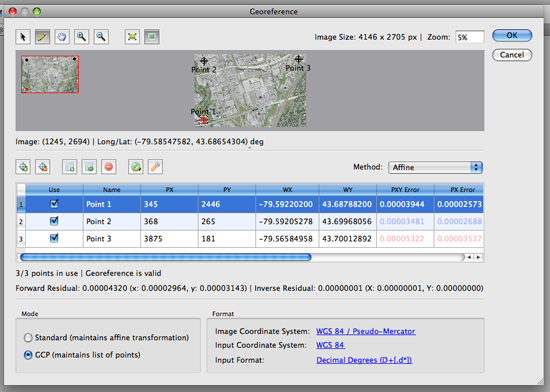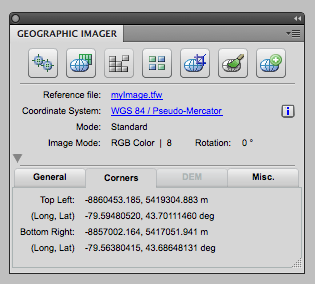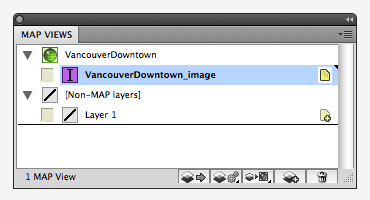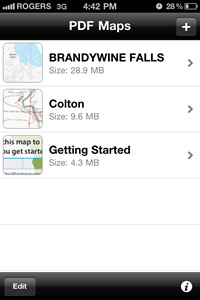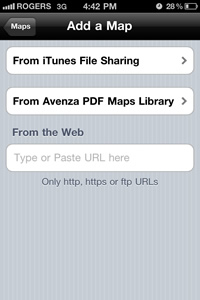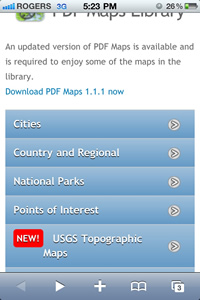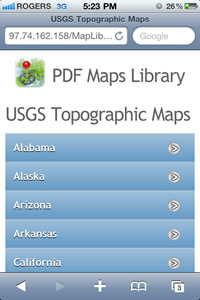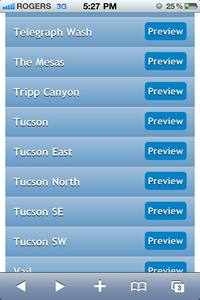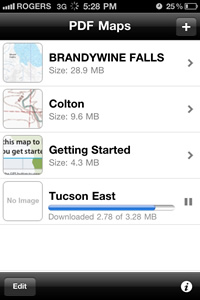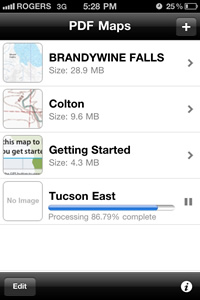– Updated PDF Maps app available now on iTunes App Store –
Toronto, ON, January 10, 2011 – Avenza Systems Inc., producers of MAPublisher® cartographic software for Adobe Illustrator® and Geographic Imager® spatial tools for Adobe Photoshop®, is pleased to announce the release of USGS (United States Geological Survey) topographic maps for use on the PDF Maps app, the first and only geospatial PDF reader for Apple iOS devices including the iPhone, iPad, and iPod Touch.
More than 55,000 USGS topographic maps are available through the PDF Maps Library to be downloaded and viewed using the PDF Maps app. The topographic maps are in geographically-aware PDF files organized by state, area, and 7.5 minute quadrangle (1:24,000 scale). A useful thumbnail allows users to preview the map before downloading it. Any iOS device with GPS or Wi-Fi allows users to interact with maps and use them for simple navigation, drop waypoints and use the compass for orientation. In addition, the latest version of PDF Maps allows users to export waypoints to CSV, GPX or KML.
“We are very excited about the release of USGS topographic maps in our PDF Maps Library. These popular maps provide a high level of detail and are perfect for portable mobile devices. We have developed an app that delivers content in a new way and are now providing access to content that users have been requesting.” said Ted Florence, President of Avenza. “With every update of PDF Maps, new features and enhancements continue to complement our other products, MAPublisher and Geographic Imager, the only available methods for authoring geospatial PDF documents within Adobe Creative Suite” he added.
PDF Maps also offers the following capabilities
- Access and load maps through iTunes File Sharing, Wi-Fi or cellular network to read maps anytime
- Access and interact with saved maps without the need for a live network connection (offline)
- Download content from the PDF Maps Library
- View your location on the PDF map using the built-in GPS device (iPhone and iPad Wi-Fi+3G) or via Wi-Fi triangulation
- Quickly view, zoom and pan maps using gestures (pinch, drag and flick, double tap)
- Change pin colors, position and label names
- View the coordinates of the current position and any waypoint (latitude and longitude), open it in the Maps app
- Measure distances and areas
- Open current map extents in the Maps app
Visit https://avenza.com/pdf-maps or for more information. PDF Maps is available now on the iTunes App Store free of charge.
More about MAPublisher and Geographic Imager
MAPublisher for Illustrator is powerful map production software for creating cartographic-quality maps from GIS data. Developed as a suite of plug-ins for Adobe Illustrator, MAPublisher leverages the superior design capabilities of this leading graphic design software. Geographic Imager is powerful software for working with spatial imagery in Adobe Photoshop that leverages the superior image editing capabilities of this raster-based image-editing software. For more information on these products and the Avenza geospatial PDF app visit the Avenza website at www.avenza.com
More about Geospatial PDF
With the release of Adobe Acrobat 9 and Adobe Reader 9 a new geospatial feature set was introduced to the Adobe PDF specification. Geospatial PDF files are PDF documents that contain geospatial information such as real world location and/or GIS attributes. Geospatial PDF documents can be created in some GIS applications such as ArcGIS and Mapinfo and from within Adobe Illustrator and Adobe Photoshop with the aid of the MAPublisher and Geographic Imager plugins, respectively. The geospatial data contained in a geospatial PDF document may be accessed and used (for example to locate a specific point or measure distances) without the aid of any additional plugins, using tools found natively within Adobe Reader 9 and Acrobat 9.
More about Avenza Systems Inc.
Avenza Systems Inc. is an award-winning, privately held corporation that provides cartographers and GIS professionals with powerful software tools for making better maps. In addition to software offerings for Mac and Windows users, Avenza offers value-added data sets, product training and consulting services. Visit www.avenza.com for more details.
For further information contact:
Tel: 416-487-5116 ● Email: info@avenza.com ● Web: www.avenza.com



